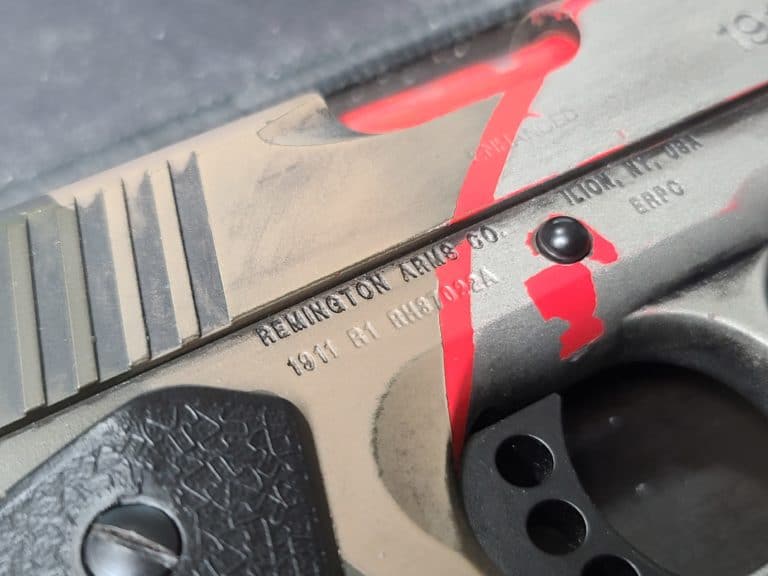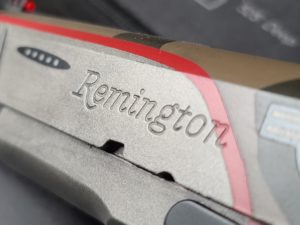The remnants of Remington Outdoors Company (ROC) reached an unprecedented $73 million settlement with victims of the 2012 Sandy Hook massacre. Given the dubious nature of the argument Remington was liable for the attack; the question is, why did it settle?
The first thing to understand is that Remington wasn’t really who settled this case. Remington no longer exists as a company. The brand is still going, and you can still buy Remington ammo and guns, but other gun companies now own those operations.
It was really ROC’s insurers that entered into this settlement. After the bankruptcy saw the sell-off of Remington’s assets, all that was left were the insurance policies relevant to the Sandy Hook case. That’s an essential insight into the decision-making at play here.
A functioning gun company has more reason to avoid setting any kind of precedent, even if it isn’t a binding legal one, where they can be held financially accountable for the criminal use of their products by third parties than a collection of insurance companies trying to wrap up a lawsuit for a defunct client. That is the gun industry’s position on this, at the very least. The National Shooting Sports Foundation, which represents gun makers and dealers, effectively disowned the settlement as a bad decision made outside the industry.
“The decision to settle in the Soto v. Bushmaster case was not made by a member of the firearms industry,” Mark Oliva, a spokesman for the group, told The Reload. “The settlement was reached between the plaintiffs and the various insurance carriers that held policies with ROC, which effectively no longer exists. We remain confident ROC would have prevailed if this case had proceeded to trial.”
The argument Remington was liable for the massacre eventually got paired down to a claim its marketing broke Connecticut law by targeting young men with messages about the military utility and lethality of the gun. The plaintiffs never actually presented evidence that either the shooter’s mother, who bought the gun in question, or the shooter himself had ever seen the advertising in question. They offered no proof advertising was directly connected to the massacre in any way.
Oliva pointed to the Connecticut Supreme Court ruling allowing the case to proceed to discovery as a sign the plaintiffs had little chance to prevail in court. The court noted that proving the ads managed to increase the lethality of the massacre “may prove to be a Herculean task” even as it allowed the case to move forward.
But insurers are, by their nature, more risk-averse than the companies they insure. They also likely took a pure numbers approach to the calculus on whether it was worth continuing to fight. So, even if the idea of the plaintiffs prevailing on the merits is doubtful, they would still factor in whatever chance it had and how much the settlement could cost. Then they would add that to the likely cost of continuing to fight the case to see if it came out to more than what they agreed to settle for.
It seems like the number they came up with was more than $73 million in the end.
Certainly, the legal fees must be huge already, given that the case has been dragging on for over six years. It’s likely the case would have dragged on for many more years. Future legal fees could have potentially run into the millions or even tens of millions.
Still, it’s difficult to imagine legal fees alone piling up to more than $73 million. That implies they felt the case could both drag out for many more years, and there was at least some chance of losing on the merits.
There is some reason to think that’s the case. Regardless of how questionable the legal claims were, Remington had lost at every step along the way. With the case proceeding through potentially-unsympathetic Connecticut state courts, that losing streak was likely to continue. And the Supreme Court’s decision not to intervene early in the case signaled it could not be relied on to reverse a ruling on the merits that went against the company.
In fact, the Supreme Court’s decision was the clear turning point in the case. Remington re-entered bankruptcy a few months after that. Poor management and flatlining demand for guns dogged the company during the Trump years, but it’s difficult to imagine the mounting legal fees in a case with no end in sight didn’t also contribute to its failure.
After Remington sold off its assets and insurers took over, it quickly became clear they preferred to try and settle the case rather than fight it. Less than a year after the bankruptcy was initiated, the insurers offered to settle for $33 million. While that offer was rejected, the outcome was inevitable.
It only took about six months for the insurers to cave and offer the full value of their combined Remington policies. Gun-control advocates got a significant victory. And the gun industry faces an uncertain future.






